Pollinators
Common pollinators to see in the garden include honey bees, native bees, butterflies, moths, humming birds, flies and mosquitos. Find out more about them with the Texas Pollinator guide from Texas Park and Wildlife.
Honey bees
When most people hear the word "pollinator" they usually think of a honey bee first. However, honey bees are not native to the Americas, but were brought over in the 1600s by European farmers. Honey bees themselves are native to Africa, Asia and Europe. The social nature of the honey bee makes them easy to use for pollinating crops. Bring in one colony to your field, and you have more than 10,000 workers!
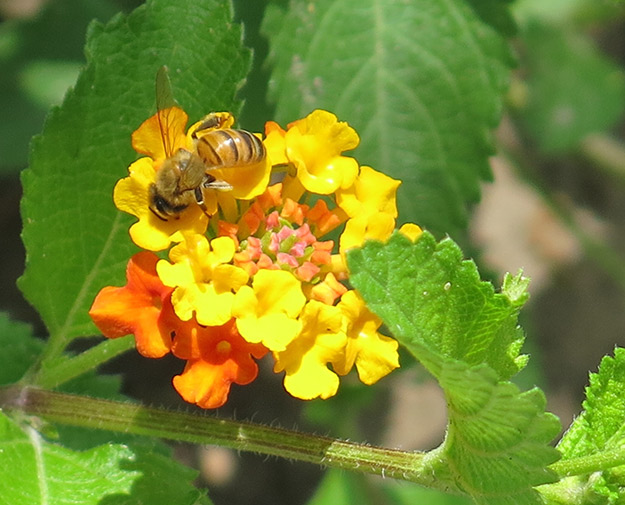
Native bees
There are lots of different kinds of bees that are native to the region including bumble bees, sweat bees, carpenter bees and mason bees. Most of them are solitary, so they do not form colonies with lots of individuals. Find out more about native bees with this Texas Native Bee Guide from the Jha research group at UT Austin.
Learn more about how to identify bumble bees here from Texas Parks and Wildlife
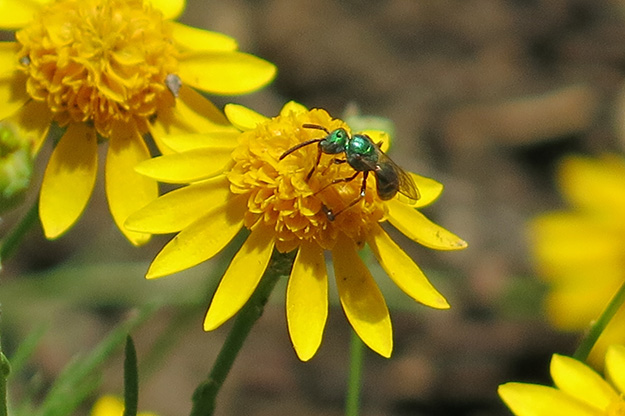
A native sweat bee. Picture: JA Mustard
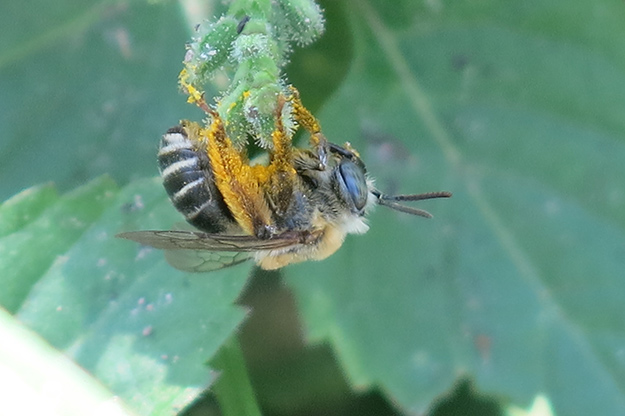
Butterflies and moths
The easiest way to tell a butterfly from a moth is to look at the antennae. Butterflies have narrow antennae with a round bulb on the end. Moths have feathery or thicker antennae that do not have a distinctive round bulb. There are many more different species of moths than butterflies, and some moths are active during the day. Over 300 different species of butterflies have been recorded in south Texas making Cameron, Hidalgo and Starr counties a butterfly hotspot.
The South Texas Chapter of the North American Butterfly Association has a great webpage for identifying many of the local butterflies.
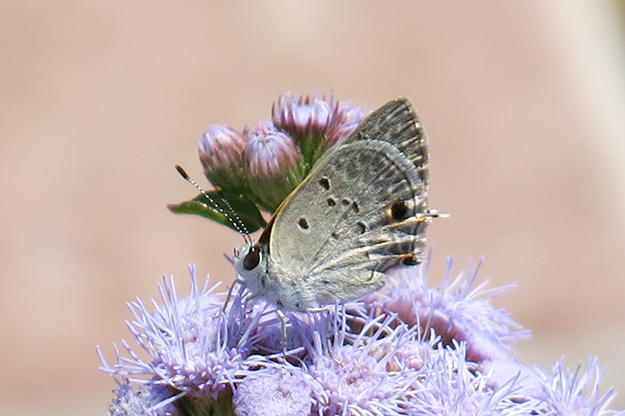
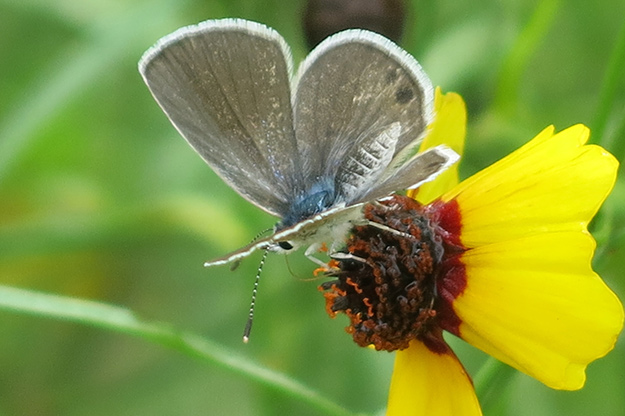
A marine blue butterfly. Picture: JA Mustard
Monarch butterflies pass through Texas on their migration route. We are looking forward to finding some monarchs in the garden this fall. Monarch caterpillars feed only on milkweed, which is why there are several different species of milkweed in the garden.
Find out more about monarch butterflies at the Monarch Joint Venture.
Flies
Flies also visit flowers for nectar. Unlike bees they only have one pair of wings.
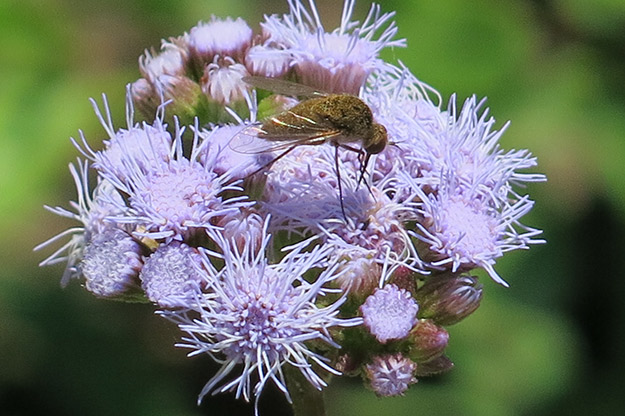
Mosquitos
Mosquitos eat nectar from flowers as their main food source. Female mosquitos only bite when they need blood to get the protein that is essential for making eggs. Whether or not mosquitos actually act as pollinators by carrying pollen from one plant to another is currently being studied.
